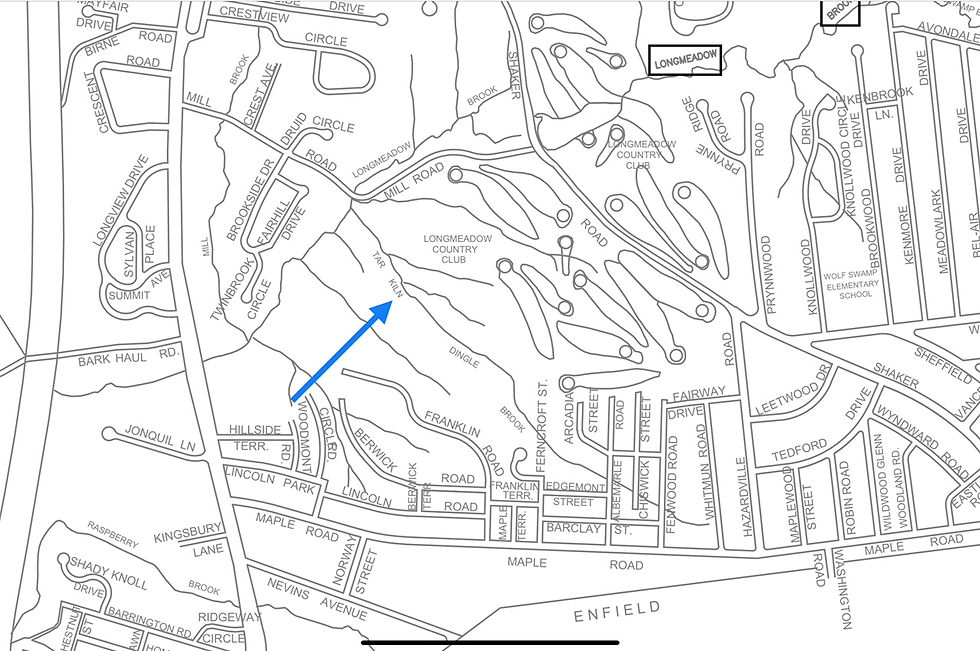- Betsy McKee

- Mar 28, 2024
- 3 min read
Updated: Oct 31, 2024

We are all familiar with the story of Frankenstein written by Mary Shelley—perhaps from one of the many movies inspired by the book. My favorite is the comedic version from 1974 starring Gene Wilder, Madeline Kahn, and Teri Garr— “it’s pronounced Fronkensteen!” But in the museum world, a Frankenstein is not a monster but an object made up of parts of other artifacts. This goes beyond the repair of a broken foot or a replaced caned seat. Sometimes they are made to deceive, but other times they are just pragmatic uses of the still-functional parts made into a new “whole.”
This Queen Anne-style table (Acc. # 19xx-99) was described in the records as a 17th-century mahogany table from the Williams family. It could be referred to as a pier table—or a table designed to be placed against a wall--often between two windows. This table does have some old elements—the graceful cabriole legs with their “pad” feet appear to be old. The disc-like extensions on the bottom of the legs have been altered, and modern pieces have been substituted. More modern screws in the bottom reveal where casters used to be.
When the top is examined from underneath (yes, we have done this!) it does not have the darkened patina appearance that we would expect for a table of its era. It also has some extra bracing that would suggest that the top was originally a marble top. The table has been cut down lengthwise at some point.

Next, we looked at the shell carving on the front and “knees” of the legs. The shell is fairly simple and the finish on the shells is oddly different.

Finally, we looked at the spiral applied carvings on the front and sides of the table. They look suspiciously familiar…AHA! The Storrs House Museum contains a wonderful piece of case furniture, referred to as a bookcase-on-desk. Only four examples from this maker are currently known; two are in the collections of Historic Deerfield, one is privately owned in Hartford, and ours. The top of the bonnet features three ball finials. We had wondered if those elements were missing a flame finial at the top, as many pieces of this type had. This theory was furthered when we found a flame finial in the attic of the Storrs House several years ago. Placing that finial against the spiral elements on this table—it’s a match! So, two old finials were split in half and applied to the front and side skirts of this "Frankenstein" table, leaving one lonely remaining finial to reside in the attic! Did they come from the big case piece, perhaps removed when it proved too tall to be moved into another room?


We will likely never know when this table was “created” or learn whether it was a deliberate act of fakery or just a frugal Yankee making use of what was handy. We have several theories—one is that the table did truly belong to the Williams family. When Stephen Williams’ parsonage house burned down in 1846, several items were rescued and brought to the Storrs House. While this table is not listed among those items, perhaps someone dropped it during that emergency, breaking the stone or marble top. Being practical, and wanting to preserve this important relic of a beloved minister, perhaps someone replaced the broken top with mahogany boards. Since the Storrs House was smaller than the Williams house, the space between the windows was also smaller, necessitating a shorter table. We’re still on the hunt for an explanation!
-Contributed by Betsy McKee, Longmeadow Historical Society Board Member
Sources: Connecticut Valley Furniture: Eliphalet Chapin and His Contemporaries, 1750-1800, by Thomas P. Kugelman, Alice P. Kugelman, and with Robert Lionetti; The Furniture of Historic Deerfield, by Dean A. Fales, Jr.; American Furniture, edited by Luke Beckerdite and William N. Hosley; American Furniture 1620 to the Present, by Jonathan L. Fairbanks and Elizabeth Bidwell Bates; Boston Furniture 1700-1900, edited by Brock Jobe and Gerald W. R. Ward; Furniture Treasury, by Wallace Nutting. We also picked the brains of several furniture experts and curators!

















